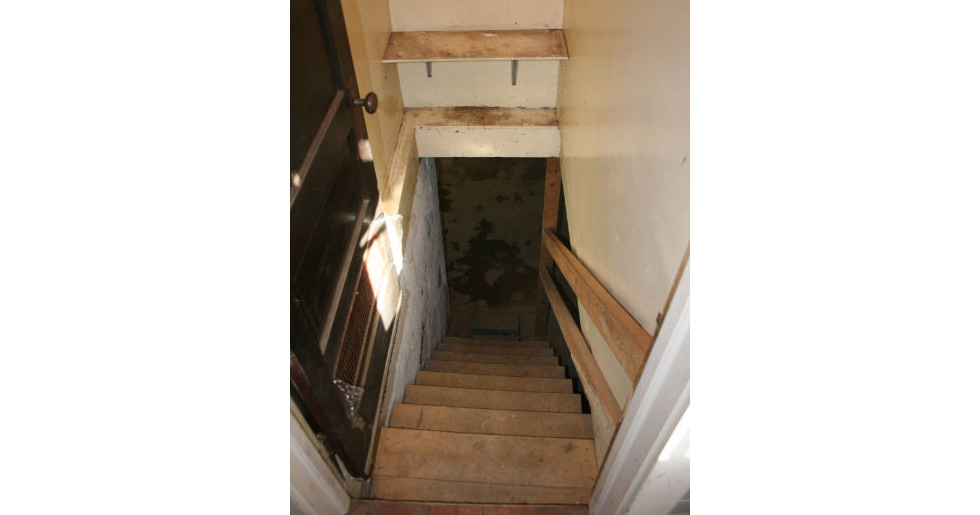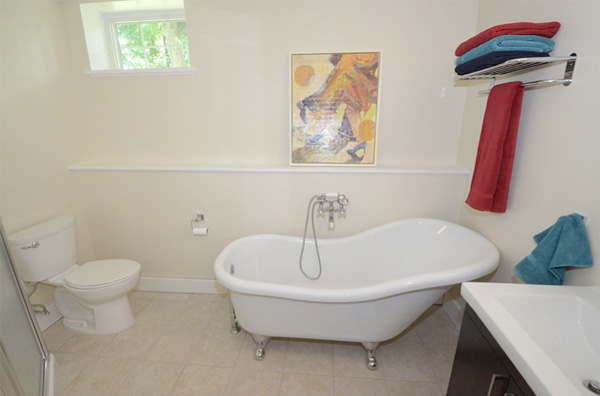Refinished basements are a great way to add living space to a small home. But what do you do when it's so dark that you can't imagine actually spending time there?
You add light.
Here's how Mike Groman transformed his 1920s bungalow's dank and musty basement into a light-fllled space.
Before the Dark Basement Remodel

Groman’s cinder-block basement, typical of 1920s construction in the area, extended throughout the full footprint of the house. It was musty from moisture seeping beneath the basement door and from gutter downspouts that were directed at the foundation.

Over time, so much water had entered the basement that the bottom of the staircase had rotted.

How to Add Light to a Dark Basement
Groman had two goals:
- Fix the wet basement problems.
- Banish that middle-earth feel so he didn’t think he was sleeping underground.
Excavating 18 inches down accomplished both goals. He also could install a footing drain system that directed water — ground and otherwise — to a new sump pump. The new depth effectively raised the ceiling from 7.5 feet to 9 feet (Groman is 6’ 2”, so he appreciated the extra headroom).

Downstairs was also screaming for more light. Digging away foundation soil along the south side of the house allowed him to install windows big enough for code-compliant emergency egress.

Plus, the new windows added plenty of light.

Being an environmentalist, Groman updated the house with eco-friendly, energy-saving heating and cooling systems.
- Rinnai on-demand tankless hot water system
- Buderus gas-fired heating system, which sends hot water to baseboard radiant heat panels throughout the house.
- Unico high-velocity mini-split air-conditioning system that shoots cold air through 2-inch insulated tubes, a space-saver in smaller homes.
In case you’ve never seen a tankless hot water system, here’s Groman’s. It’s only one foot by two feet and fits neatly on the wall.

Here’s a picture of the baseboard radiators in a finished bedroom. They look like trim on the bottom of the wall.

Groman added “half walls” throughout the perimeter of the downstairs to hide water, electric, and gas lines. I love half walls for all the uglies they cover and the design opportunities they provide; the top of the half wall makes a convenient shelf for artwork and knickknacks.
This is what’s behind the half wall.

And here’s what the space looks like finished. That half wall makes a great picture gallery.

How to Add a Small Bathroom in a Basement
Groman wanted the bathroom remodel to look modern and uncluttered. And although he hadn’t planned on installing a tub — he thought the 70-square-foot bathroom was too small — his friends convinced him that every house should have at least one tub, for little kids and big aches.
The basement bathroom has a small shower, which you can see peeking out of the bottom left corner in the picture below.

Groman repurposed one of the house’s original exterior doors for the bathroom. He sanded and painted it and covered its windows with window film, which lets in light and protects privacy.

Custom Touches to Lighten Up a Dark Basement
- Floating (not glued down) cork flooring throughout the lower level — a better choice than carpet, which can harbor bacteria in underground spaces. Cork is sustainable and waterproof.
- Chestnut tongue-and-groove wood on staircase landing, left over from another project.
- Under-stairs storage.
- Reusing demolished basement concrete as the base of the backyard rain garden — instead of sending it to a landfill.
How Much Does the Dark Basement Remodel Cost?
- Excavation of basement: $6,400
- Installation of drainage system: $1,000
- Tankless water heater, installed: $3,000
- Heating system with radiant panels: $6,000
- High-velocity air conditioning system: $7,000
- Cork flooring, installed: $2,640
- Barn door hardware: $360
Editor's note: Prices reflect pricing at the time of the project and have not been updated for inflation.
TOTAL: $26,400
